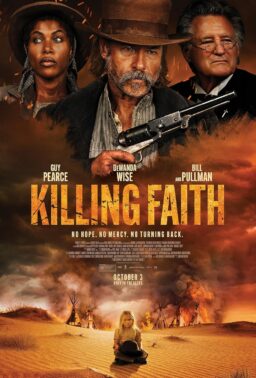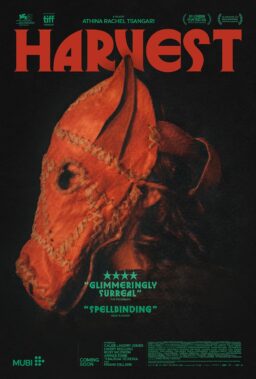My final dispatch from the exhausting but exhilarating Toronto features four films by a quartet of internationally acclaimed directors, including the latest from the man behind “Drive My Car,” an unexpected nominee for Best Picture in 2022. At least three of these films seem destined to make waves and spark conversations on the arthouse scene, already producing some of the most interesting debates out of Venice and Toronto. Let’s start with one of those.
Shortly after exiting “The Beast,” a friend and colleague asked me what it was about, and I don’t think it was just the fest burnout that made that a difficult question to answer. The latest from Bertrand Bonello (“Nocturama”) is a deliberate mindf**k, a movie that I’ve heard compared to “Cloud Atlas” in the way it moves across generations to tell stories of a man and woman that feel interconnected in the manner in which they center gender roles and an interplay between connection and violence. Bonello has an undeniable mastery of form—he produces some of his most striking imagery here and is playing with some of his most ambitious ideas—but this loose adaptation of Henry James’ The Beast in the Jungle sometimes verges on purposefully obtuse, intentional in its audience alienation to a frustrating degree. Still, this is one of those fest films that lingers, a movie with impeccable execution and an abundance of ideas to explore after it’s over.
Lea Seydoux is typically excellent as Gabrielle, partnered here with George MacKay as Louis. They play what TIFF describes as “star-crossed lovers,” seen at various points in history as a Gabrielle in the future undergoes a process designed to eliminate hampering emotions still lingering from past lives. So Gabrielle revisits past versions of herself that encountered Louis, both as an aristocrat in 1904 France and an incel in 2014 Los Angeles, while also navigating a future in which she meets this fated partner yet again, questioning what the “purification” of all the things that make us human could do to their relationship.
Clearly, there’s a lot to unpack here, and Bonello never lacks confidence. He moves back and forth in time, working in more of an emotional register than a literal one, but there are times when “The Beast” feels a little too self-aware of the games it’s playing. Of course, no one expects a film with this ambitious structure to be realistic, but Bonello gets overly precious with his time jumps and editing tricks. The movie actually works the best in its one-on-one beats as Seydoux and MacKay find a balance between attraction and anxiety that really drives the film. They understand people who are drawn to each other, uncertain if it’s passion or pain that underlies their connection.

The great Ryûsuke Hamaguchi returned to TIFF this year just two years after “Drive My Car” with his slow burn “Evil Does Not Exist,” a film that started as a short accompaniment to a musical piece by the phenomenal composer Eiko Ishibashi but was then expanded to a full feature. Its modest origins can still be felt in a drama that left me a bit more wanting than some of his work, but this is also an undeniably well-made film with an ending that I’ve already discussed in fascinating ways.
Takumi lives in a remote region of Japan with his daughter Hana. They have a simple life, as seen in long scenes in which Takumi chops wood and collects water for a nearby restaurant. Their serenity is threatened by a new business project in the area that will bring “glamping” (glamorous camping) to the region, which is pitched as a positive for the community until a phenomenal scene in which the agents for the company are confronted by the many things they haven’t considered like septic run-off and fire hazards. Two agents from the company get involved in Takumi’s life, even asking him to be the caretaker for the incoming tourists, as Hamaguchi slowly drags us to a shocking ending that feels like a warning over what can happen when people play tourists in other people’s lives.
Hamaguchi has a mastery of camera movement and deliberate tone that can be mesmerizing. Still, his pace here is a bit overly dragged out at times, and his ending is a bit of a blunt instrument. It’s impossible not to admire the filmmaking and appreciate the themes that Hamaguchi is unpacking, but this is a minor work from a major filmmaker. Still worth your time.

Even a bit more minor is the well-mounted but frustrating “Shoshana,” a reminder that veteran Michael Winterbottom has never been constrained by genre but a bit of a dull misfire in the notable filmography of the man who directed “Tristram Shandy: A Cock and Bull Story,” “24 Hour Party People,” and “The Trip.” It’s a handsomely mounted period piece about a place and time in which friends were forced into becoming enemies, and Winterbottom draws an especially solid performance from his leading lady, but this one feels like a near-miss.
“Shoshana” takes place in Tel Aviv in 1938, a city ruled by British authorities trying to maintain increasingly difficult peace between the Palestinian and Jewish populations. Thomas Wilkin (Douglas Booth, looking very much like a movie star of the era in which the film takes place) has fallen for Shoshana (Irina Starshenbaum), the daughter of Dov Ber Borochov, the Zionist Labour co-founder. As the organization known as Irgun works to push the Brits out of the region through whatever violent means possible, it naturally makes the romance between a Brit and a Jew increasingly difficult.
Told with the direct nature of an old-fashioned procedural, there’s a disheartening undercurrent in “Shoshana” about how conflict can destroy relationships and even individual potential for happiness. In an alternate reality, Thomas lives a happy life in Tel Aviv with Shoshana, but history and division would not allow it. There are times when “Shoshana” is almost too well-made—there’s a version of this tale that’s a little rougher around the edges and a little more passionate so as not to be so often distant and cold. However, when it does burst into violence, it reminds viewers of the cost of trying to stay neutral in an increasingly divided world, a high price in 1938 and today, too.

Finally, there’s the brutal and unsparing “Green Border,” a return to the international dramatic scene by “Europa Europa” director Agnieszka Holland after a few years directing mostly television. The veteran filmmaker turns her camera on the refugee crisis on the Polish border, approaching the human rights nightmare from various angles, including the people treated like pawns and those trying to do something about it. Her film is a truly difficult watch, but a well-crafted one in the manner in which it shifts focus, using these personal stories to paint a larger picture. I’m not quite sure it justifies its massive length of 151 minutes, but Holland’s direction is confident, and the camerawork here is consistently riveting in its balance of artistic composition and docudrama realism. This is a movie that many people probably couldn’t get through, but they probably should.
In 2021, Alyaksandr Lukashenka, the dictatorial leader of Belarus, did something akin to a war crime. He offered safe passage through his country to Poland, leading to a flood of refugees through the forested area, or “Green Border.” The idea, reminiscent of how some Southern Governors have treated migrants in the U.S. by forcing them onto buses headed north, was to create difficulty for European countries, which led to Poland pushing back on the incoming migrants with force. Holland starts her film alongside a group of refugees who are literally thrown back and forth over the barbed wire border, shifts to the guards who (sometimes) reluctantly enforce these orders, and then expands further to the Polish citizens and aid workers trying to help. It’s an ambitious structure that mostly works, making it clear how these kinds of top-level decisions lead to inevitable tragedy.
Cinematographer Tomasz Naumiuk delivers some of the best work of the year with black-and-white photography that never calls attention to its artistry, almost seeming as if it’s stumbling onto its most striking imagery like a documentarian capturing something that’s really happening. The framing used by Holland and Naumiuk gives “Green Border” an urgency that other filmmakers would have missed without being overly precious or pretentious. This is one of many stories that should be told internationally, giving Holland’s already-acclaimed film the feeling of a call to action as much as a piece of art.












